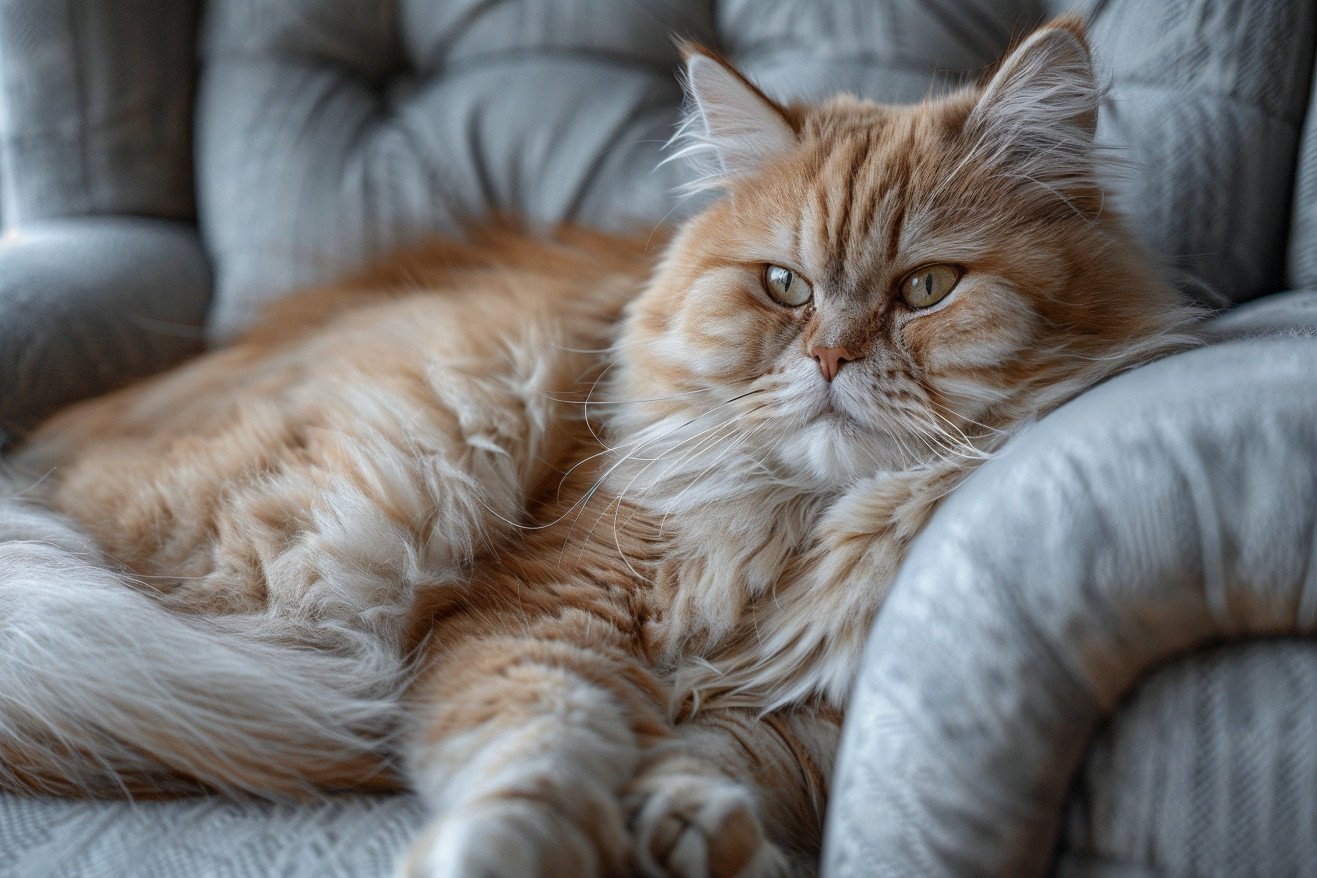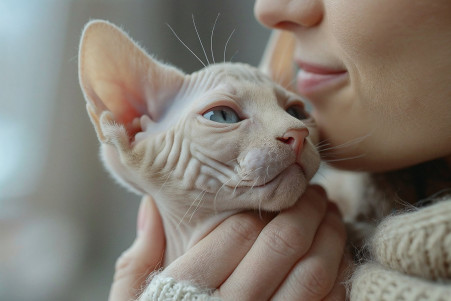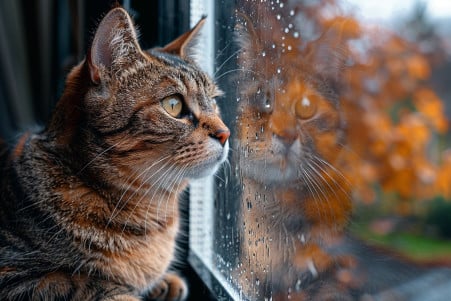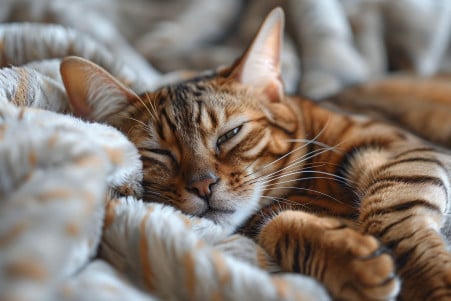Are Persian Cats Hypoallergenic? The Science
31 March 2024 • Updated 30 March 2024

If you have allergies and are thinking about getting a Persian cat because you’ve heard they’re hypoallergenic, you should know that no cat breed is completely non-allergenic. However, some breeds do produce less of the Fel d 1 protein that causes allergic reactions. Persians are moderately shedding and produce lower-than-average allergen levels, which means they can work for people with mild to moderate allergies.
To help you decide if a Persian cat is right for you, we’ll look at the most recent scientific research. This will include veterinary research that compares protein levels and dander production in different cat breeds. We’ll also cover how genetics, grooming, and other environmental factors can affect allergen levels. After reviewing the evidence, you’ll be better equipped to decide if a Persian cat is the right choice for your hypoallergic home.
Are Persian cats hypoallergenic?
What Are Cat Allergens and What Impact Do They Have?
Although no cat is completely hypoallergenic, some cats produce fewer allergens than others. The most common allergen is the Fel d 1 protein found in cat saliva, skin, and fur. This protein is sticky and can dry out and become airborne, leading to allergic reactions when inhaled.
In addition to Fel d 1, dander (dead skin flakes) and other proteins in cat urine and saliva can also cause allergies. Allergic reactions can range from mild sneezing and itchy eyes to severe asthma attacks and anaphylaxis, and the longer someone is exposed to an allergen, the more likely it is that their symptoms will become more severe.
The amount of allergens that cats produce can be influenced by a variety of factors, including breed, sex, and whether or not they’ve been spayed or neutered. For example, unneutered male cats produce the most Fel d 1 and are therefore the most likely to cause problems for people with allergies. In addition, some breeds, such as Persians, are more likely to produce allergens because of their genetics and the fact that they have long, thick coats that shed a lot.
Although no cat is hypoallergenic, this information can help cat owners make more informed choices about how to manage their allergies. With the right precautions in place, even people with allergies may be able to have a cat in their home.
Coping With Allergies in Persian Cats
Because Persian cats are not hypoallergenic, people with allergies will have to be more proactive in managing their symptoms if they choose to adopt one. A guide on Feline Behavior Solutions recommends that people who are allergic to cats bathe and groom their Persian cats regularly to reduce dander and allergens. They also suggest using an air purifier with a HEPA filter to remove allergens from the air.
To further reduce exposure, it is recommended that people with allergies keep their Persian cats out of their bedrooms and limit their access to other areas of the home. The guide also recommends that people with allergies vacuum their homes frequently with a vacuum that has a HEPA filter and wash their cats' bedding regularly. Some people with allergies have also reported that changing their cats' diets to high-quality wet food has helped reduce allergens.
Although these measures can help people with allergies live with Persian cats, the Care.com article points out that Persians are not hypoallergenic and that some people will still experience allergies even with these interventions. People with severe allergies may want to consider other hypoallergenic cat breeds instead.
Investigating Possible Hypoallergenic Breeds
While no cat is completely hypoallergenic, some breeds are believed to produce fewer allergens than others. Omlet lists the Siberian, Balinese, and Oriental Shorthair as some of the best hypoallergenic cat breeds because they produce less of the Fel d 1 protein and shed less fur, which means they may expose allergic people to fewer allergens.
However, it's important to remember that allergen levels can still differ between cats of the same breed. Home & Roost explains that the best way to determine how allergic you are to a specific breed is to spend time with the breed before you adopt. There are also mixed breeds, like the Himalayan (a Persian and Siamese mix), that may be better options for people with allergies.
While no cat is truly hypoallergenic, knowing the genetic and environmental factors that impact allergen production can help people with allergies better understand their options when looking for a new feline friend.
Genetics and the Environment Play a Role in Allergen Production
A cat's genetics are a major factor in how much allergen it produces. According to Cowaymega, Persian cats are genetically predisposed to produce high levels of the Fel d 1 protein, which is the main allergen in cat saliva, skin, and fur. This glycoprotein is a common cause of allergic reactions in people who are sensitive to it.
In addition to genetics, environmental factors can also influence how much allergen a cat produces. VCA Animal Hospitals explains that a cat's diet and environment can affect the amount of allergens it produces. For example, neutered male cats produce less allergen than unneutered male cats. When it comes to a Persian cat's allergenicity, it's important to consider both genetic and environmental factors.
Although Persian cats aren't hypoallergenic, understanding the interplay between genetics and the environment in allergen production can help people with allergies decide whether or not this breed is a good choice for them. In some cases, people may be able to live with a Persian cat if they take the right precautions and use the right management techniques.
Conclusion: Finding the Right Feline Companion
Although Persian cats are not hypoallergenic, they may still work for some people with cat allergies if their reactions are mild to moderate. The key is to know what influences the allergens they produce and how to manage exposure.
Persian cats are genetically predisposed to produce more of the Fel d 1 protein, the main allergen in cat saliva, skin, and fur, and their long fur means they shed more, which can increase allergen levels in the home. However, neutered male Persians produce less of the protein than intact males.
To keep allergen levels down when living with a Persian cat, it's recommended that you groom them regularly, use air purifiers, and limit where they can go in the home. Changes in diet, including feeding them a high-quality wet food, may also help reduce the amount of allergens they produce. For those with more severe allergies, it may be best to look into other hypoallergenic breeds.
In the end, whether or not to bring a Persian cat into a home with allergies will depend on how much the potential benefits of having a Persian cat outweigh the challenges of managing their allergens. With knowledge and planning, some people with allergies may be able to experience the love of a Persian cat.


